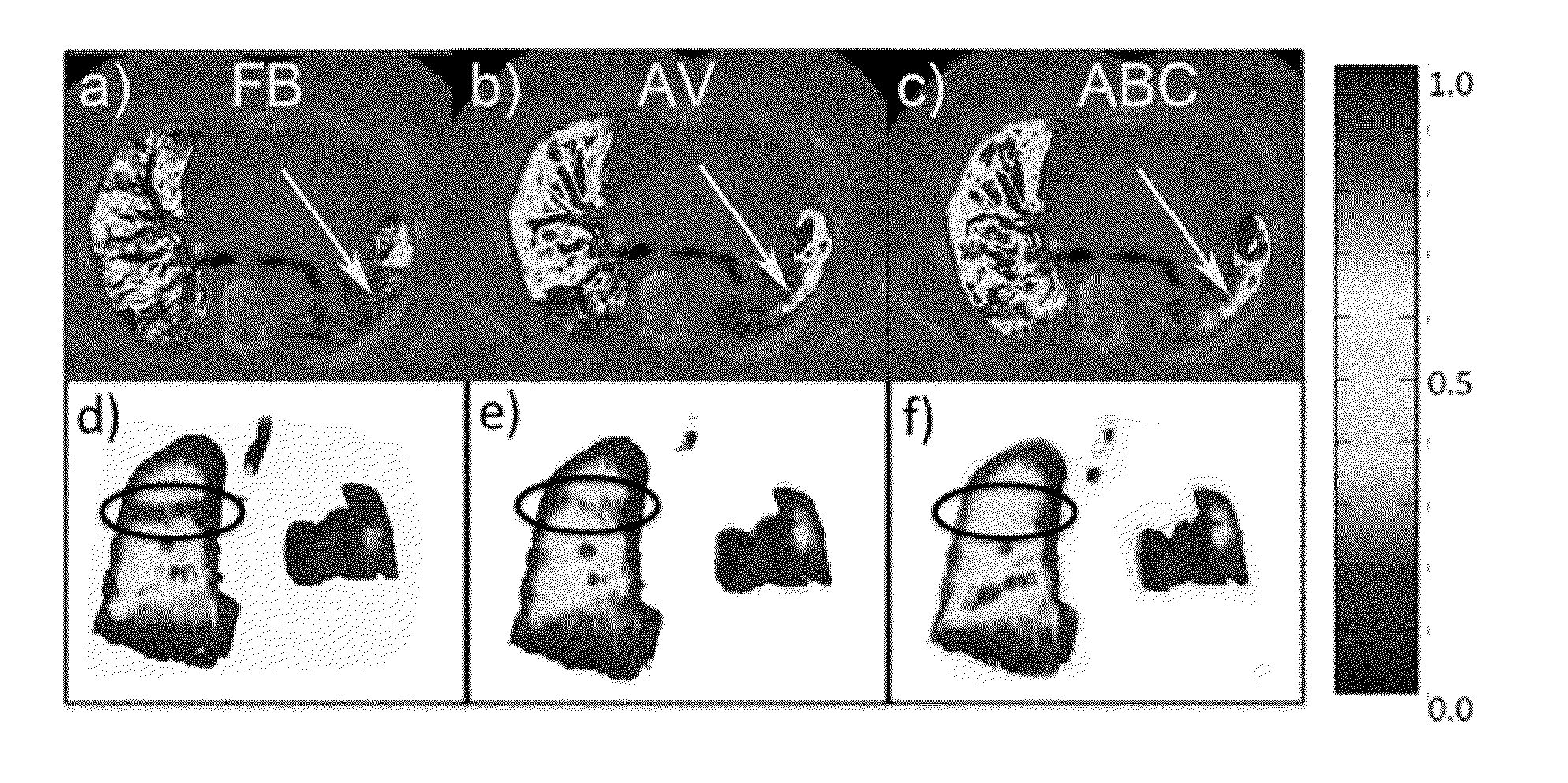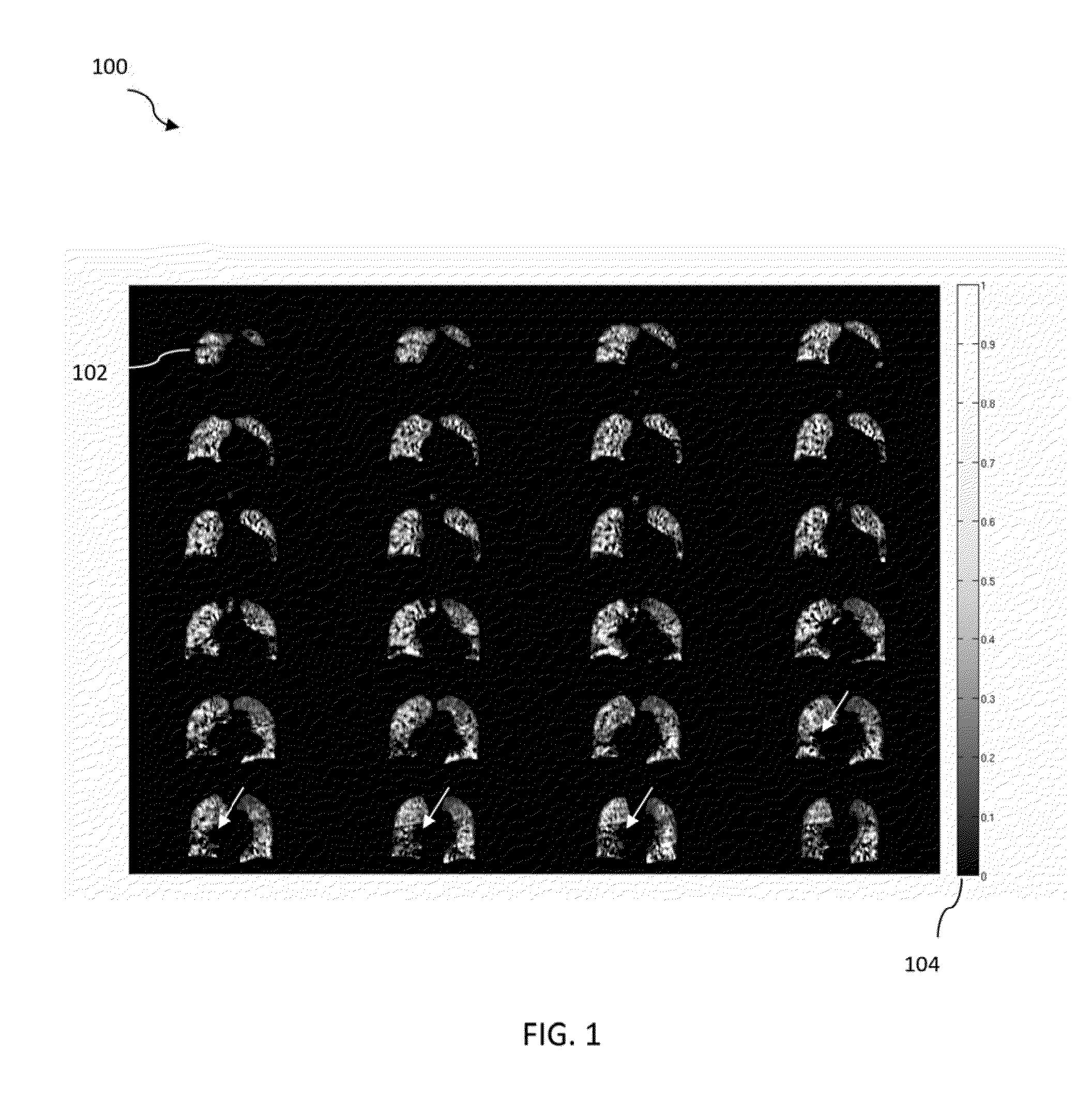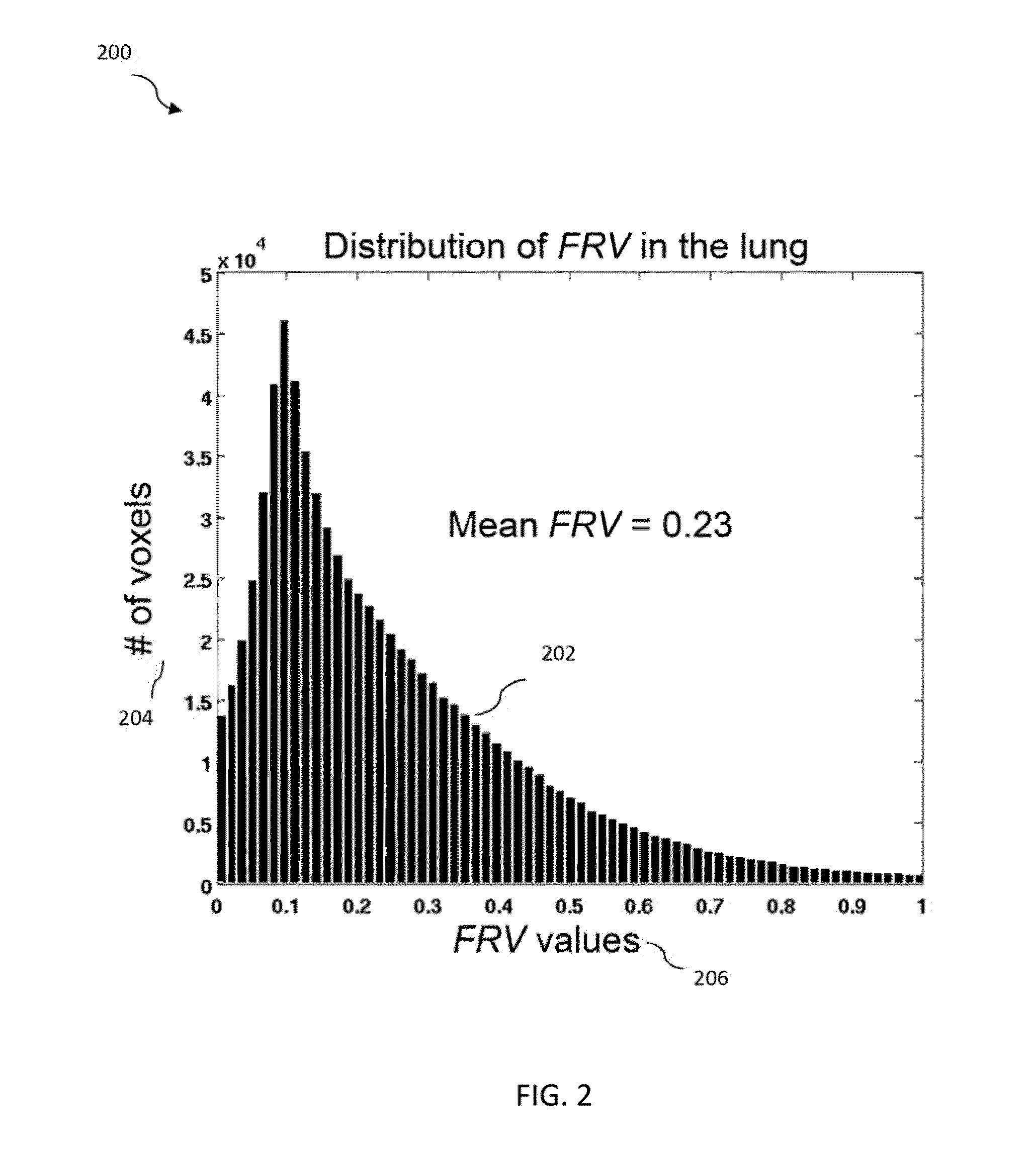Quantitative evaluation of fractional regional ventilation using four-dimensional computed tomography
a computed tomography and fractional region technology, applied in tomography, diagnostic recording/measuring, applications, etc., can solve the problems of severe impairing ventilation, adversely affecting lung function, and uneven distribution of ventilatory disruptions in the lung, so as to reduce data noise.
- Summary
- Abstract
- Description
- Claims
- Application Information
AI Technical Summary
Benefits of technology
Problems solved by technology
Method used
Image
Examples
examples
[0052]FIG. 8 shows a method 800 of determining fractional regional ventilation in accordance with an illustrative embodiment of the present invention. The method 800 includes obtaining first lung image data indicative of a first phase of a respiratory cycle, the first lung image data including at least one first voxel, as step 802, obtaining second lung image data indicative of a second phase of a respiratory cycle, the second lung image data including at least one second voxel, at step 804, determining an apparent mass ratio k based on the first lung image data and the second lung image data at step 806, determining first spatially matched lung image data including N voxels and second spatially matched lung image data including N voxels, based on the first lung image data and the second lung image data, at step 808, and determining at least one fractional regional ventilation value (FRV value), in accordance with a first equation FRV(n)=(k·ρ2_n−ρ1_n) / ρ1_n at step 810. The value of ...
PUM
 Login to View More
Login to View More Abstract
Description
Claims
Application Information
 Login to View More
Login to View More - R&D
- Intellectual Property
- Life Sciences
- Materials
- Tech Scout
- Unparalleled Data Quality
- Higher Quality Content
- 60% Fewer Hallucinations
Browse by: Latest US Patents, China's latest patents, Technical Efficacy Thesaurus, Application Domain, Technology Topic, Popular Technical Reports.
© 2025 PatSnap. All rights reserved.Legal|Privacy policy|Modern Slavery Act Transparency Statement|Sitemap|About US| Contact US: help@patsnap.com



